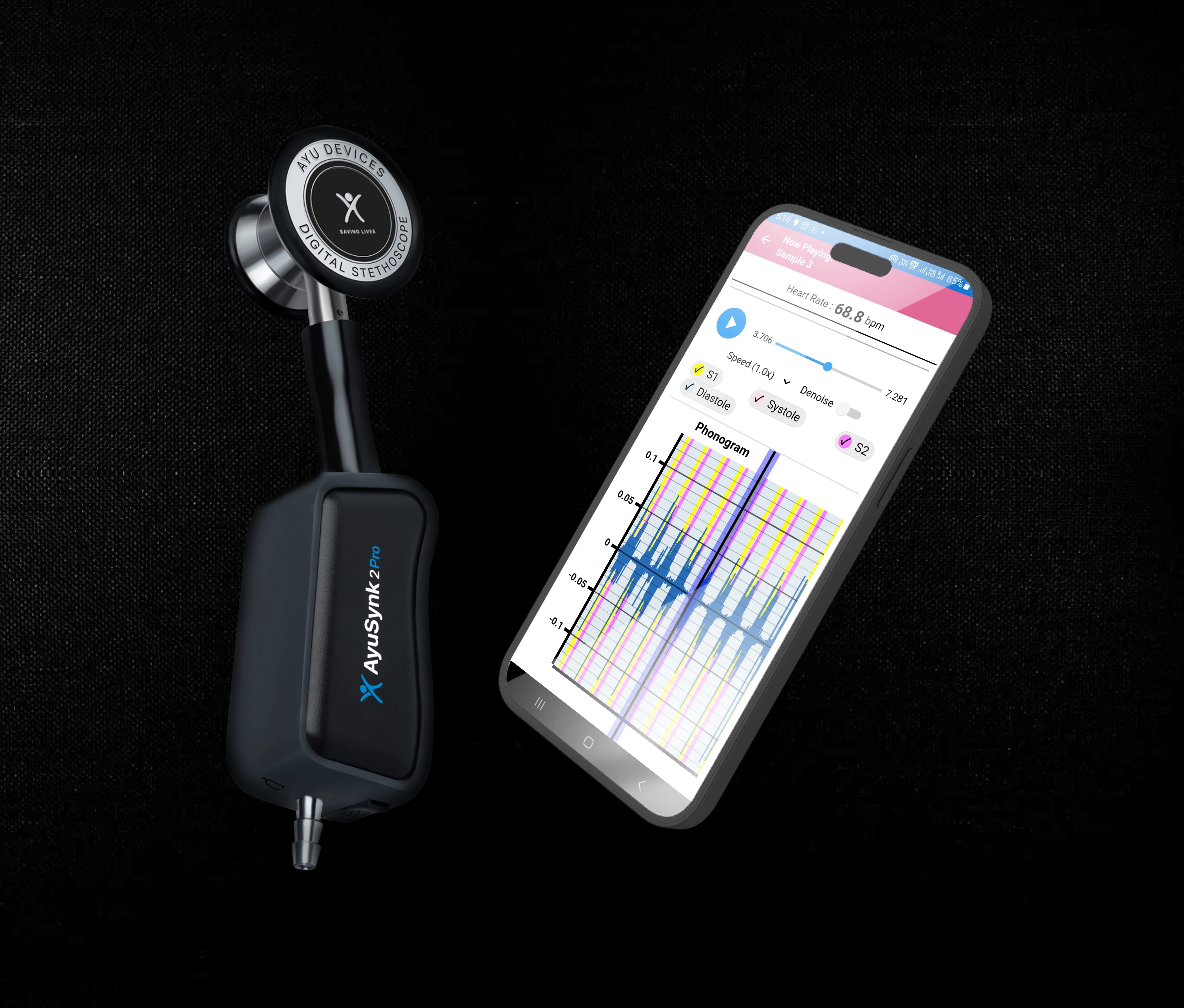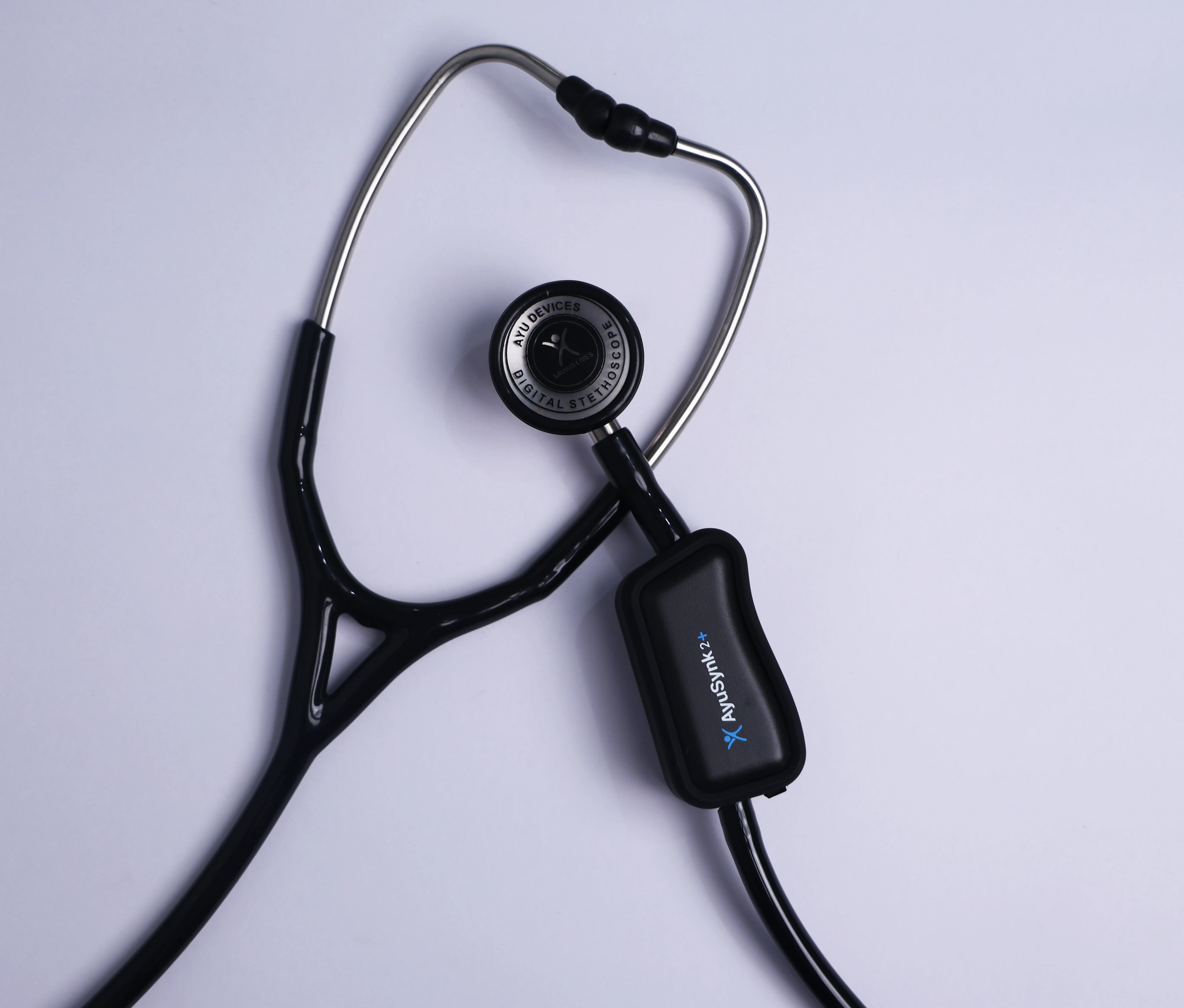Wireless Stethoscopes for the Connected Clinician: A Deep Dive into Bluetooth Auscultation

Introduction
Though it has been a part of medicine for generations, the stethoscope has undergone a silent revolution in recent years. The once-simple stethoscope is now being upgraded with wireless features to make remote diagnosis possible.
These days, wireless stethoscopes serve as digital bridges between patients, doctors, and cloud-based healthcare systems in addition to being instruments for listening. These gadgets offer enhanced mobility, better diagnostics, and smooth teleconsultation with features like hands-free operation and real-time audio streaming.
Let’s take a closer look at how Bluetooth-powered auscultation is reshaping clinical workflows.
What is a Wireless Stethoscope?
A wireless stethoscope functions similarly to a traditional one but uses digital sensors and Bluetooth modules to transmit body sounds to a paired device like a smartphone, tablet, or computer.
The basic components include:
- Acoustic sensors that pick up heart and lung sounds
- A Bluetooth transmitter that sends audio to an app or platform
- An integrated software interface for playback, recording, and analysis
Unlike wired digital stethoscopes, which rely on physical cables, wireless models remove clutter from the process. No cords. No tangles. Just mobility and clarity.
How a Wireless Digital Stethoscope Enhances Clinical Practice
Imagine moving freely between bedsides or conducting a consultation without adjusting wires. That’s the appeal of the wireless digital stethoscope – a practical, ergonomic upgrade to the standard model.
Key benefits include:
- Real-time audio streaming to laptops and mobile devices
- Built-in amplification with toggles for heart or lung sound modes
- Hands-free operation, allowing clinicians to focus on patients, not equipment
These features aren’t just about convenience – they support faster, more focused diagnostic work.

The Role of Bluetooth in Wireless Stethoscopes
Bluetooth has become the preferred tech for wireless auscultation for good reason. It’s widely supported, energy-efficient, and reliable enough for distance auscultation.
In clinical use, a wireless stethoscope using Bluetooth ensures:
- Low-latency audio transmission with minimal lag
- Secure pairing with encrypted protocols for patient privacy
- Seamless integration with teleconsultation platforms, enabling live auscultation between doctors and remote patients
Case in point: doctors using AyuSynk devices have paired them with certain apps during virtual consultations, bringing the examination room to wherever the patient is.
Experience How Wireless Can Change Your Practice
Understanding Wireless Stethoscope Price and Value
You’ll find wireless stethoscope prices vary widely from entry-level models to advanced units.
What affects the cost?
- Amplification capability – the higher the clarity, the higher the price
- Mobile app support – some include cloud syncing, patient profiles, or AI features
- Durability and design – sleeker, hospital-grade units tend to cost more
But in terms of value, many clinicians report strong ROI. Especially in telemedicine or rural settings, the improved diagnostic confidence and workflow efficiency quickly justify the cost.

Use Cases of Wireless Stethoscope in Modern Settings
The real strength of a wireless stethoscope lies in its flexibility. Here’s where it shines:
- Emergency care: Used by paramedics to relay heart sounds en route to hospitals
- Rural health centers: Enable local health workers to collaborate with specialists remotely
- Medical education: Live audio streaming lets students hear real-time patient sounds during lectures
It’s a tool that adapts to any setting – urban or remote, solo or team-based.
AyuSynk and the Future of Wireless Auscultation
Among wireless models, AyuSynk 2Pro Advance stands out. Developed in India, it offers:
- 60X sound amplification
- Bluetooth transmission with app support
- Real-time streaming, AI that sharpens heart and lung sounds, and secure sharing
Doctors using AyuSynk highlight how it supports better diagnosis, especially in rural teleconsultations. Institutions also appreciate its role in streamlining case documentation and follow-ups. It’s not just a tool – it’s part of a connected care ecosystem.
Conclusion
As healthcare embraces mobility and digital access, the wireless stethoscope is emerging as a new essential. It brings diagnostics into the 21st century – removing wires, expanding reach, and making every heartbeat count.
Whether you’re a solo practitioner, a hospital-based specialist, or a telehealth provider, choosing the right wireless device can elevate your practice.










